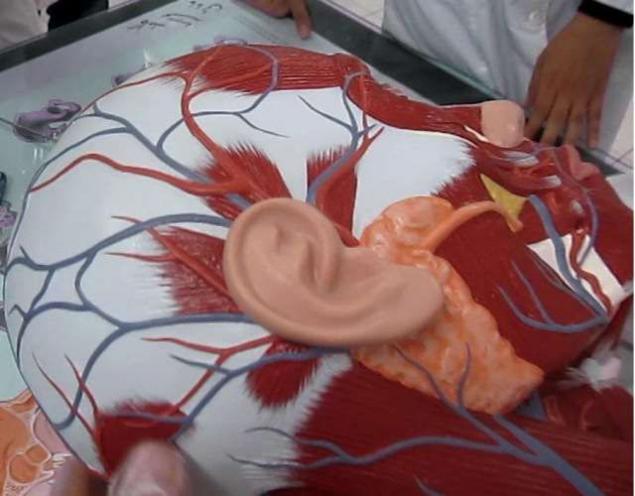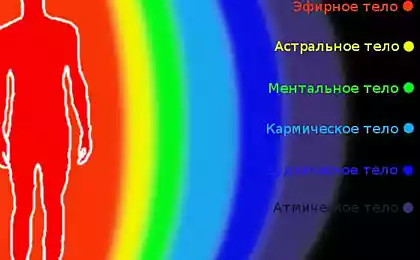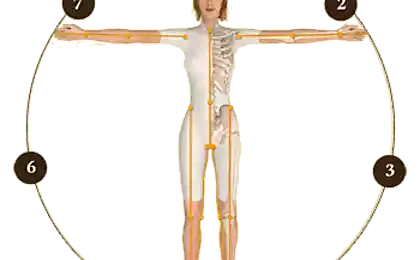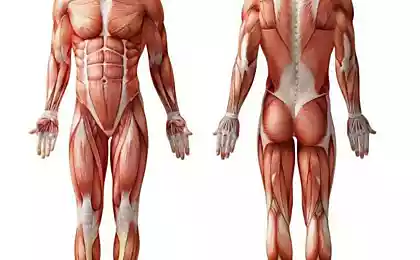971
Parts of the body, which you do not know (11 photos)
Our body is full of mysteries. Although our bodies and systems have long been the subject of scrutiny, there are parts of the body, which still remained neizvestnymi.Nekotorye of these bodies are required, while others seem pretty useless. Still others are somewhere, but just do not get as much attention. Here are 10 of the body of which you are likely to wonder.

1. Something in the knee

The human body is so easy that even after spending countless autopsies for centuries, scientists continue to discover new parts of the body. So in November 2013, Belgian researchers first described the man in the knee ligament, which was called the anterolateral bundle. French surgeon for the first time suggested that such a bunch of there in 1879, but it was not proved until recently. This discovery helped explain some of the injured knee when the knee of the patient remains unstable, moving in a certain way.
2. Layer Dua

Another unexpected discovery of a new part of the body has become an unknown layer in the eye of the person who is behind the cornea. The thickness of this thin but strong structure called Dua layer, after the scientist who discovered it, is only 15 microns or one millionth of a meter. The opening of this layer will help scientists better understand some of the eye diseases caused by rupture or damage the layer.
3. Additional edge

In humans, 12 ribs on each side, but some people have an additional edge, which can lead to some health problems. Additional edge called a cervical rib, and it is found at 0, 05 -3 percent of the people. It grows from the edge of the base of the neck just above the collarbone, and sometimes not fully formed, representing a thin beam fiber fabric. Additional edge can cause some problems if it presses on the next blood vessels or nerves. This leads to the violation of the scalene muscle syndrome, which is characterized by pain in the neck or shoulder, loss of sensation in the limbs, or blood clots.
4. muscles, wiggling ears

Cats, dogs, and some people can wiggle their ears using ear muscles. This group includes the front ear muscle that moves the ear forward, superior auricular muscle that raises it, and the rear ear muscle that provides the backward movement. Although we all have these muscles, only 15 percent of people are able to use them to wiggle their ears. It is likely useful skill inherited from our ancestors, when they had to turn their ears in the direction of the alarm sound. Now this capacity we need more for fun.
5. Nail cuticle

Cuticle - a dense skin layer on the bottom of the nail, on the border of the nail and finger. Under the cuticle formed fingernails. Although it is almost invisible, the body protects us from bacteria and dirt penetration.
6. The hyoid bone

The hyoid bone is detected only in humans, the only bone in the body, which is not linked to any other and is the basis of speech. This horseshoe-shaped bone in the throat located between the chin and thyroid cartilage. Due to its location, this bone together with the larynx and tongue produces a variety of voices in humans.
7. The coccyx

The oil or coccyx bone is formed at the confluence of the vertebrae and is a relic of the tail, which is in other mammals. The coccyx plays an important role in the attachment of the small muscles of the pelvis and maintain. However, there were cases when the coccyx is surgically removed without any consequences. There are cases where children are born with an elongated coccyx. In modern medicine, an extension in the form of a tail can be removed surgically, but in the Middle Ages, it was a sign of communication with the devil, and in this case were executed and mother and child.
8. Vanishing bone

Human skeletal system is full of wonders. In adults, for example, less bone than in newborns. A child is born with 350 bones, but because some bones fuse during growth, an adult is only 206 bones.
9. The new stomach

Every 3-4 days we have a new stomach. This is because the gastric mucosa is constantly updated with new cells. In fact, the stomach each time creates a new layer to its own acid is not absorbed this body.
10. podnosovoy trough

Podnosovoy chute or a filter - a vertical chute located between the upper lip and nose. Some animals have a better sense of smell due to the wetting region near the nose. However, people podnosovoy chute does not play a specific function.
Perhaps the filter has lost its functionality because of all the senses people no longer rely on sight. However, scientists are still interested in this part of the body, as it was formed during a certain stage of embryonic development. The unusual shape of the area above the upper lip can be a sign of fetal malformations. Violations of podnosovogo trough associated with certain diseases, including autism.

1. Something in the knee

The human body is so easy that even after spending countless autopsies for centuries, scientists continue to discover new parts of the body. So in November 2013, Belgian researchers first described the man in the knee ligament, which was called the anterolateral bundle. French surgeon for the first time suggested that such a bunch of there in 1879, but it was not proved until recently. This discovery helped explain some of the injured knee when the knee of the patient remains unstable, moving in a certain way.
2. Layer Dua

Another unexpected discovery of a new part of the body has become an unknown layer in the eye of the person who is behind the cornea. The thickness of this thin but strong structure called Dua layer, after the scientist who discovered it, is only 15 microns or one millionth of a meter. The opening of this layer will help scientists better understand some of the eye diseases caused by rupture or damage the layer.
3. Additional edge

In humans, 12 ribs on each side, but some people have an additional edge, which can lead to some health problems. Additional edge called a cervical rib, and it is found at 0, 05 -3 percent of the people. It grows from the edge of the base of the neck just above the collarbone, and sometimes not fully formed, representing a thin beam fiber fabric. Additional edge can cause some problems if it presses on the next blood vessels or nerves. This leads to the violation of the scalene muscle syndrome, which is characterized by pain in the neck or shoulder, loss of sensation in the limbs, or blood clots.
4. muscles, wiggling ears

Cats, dogs, and some people can wiggle their ears using ear muscles. This group includes the front ear muscle that moves the ear forward, superior auricular muscle that raises it, and the rear ear muscle that provides the backward movement. Although we all have these muscles, only 15 percent of people are able to use them to wiggle their ears. It is likely useful skill inherited from our ancestors, when they had to turn their ears in the direction of the alarm sound. Now this capacity we need more for fun.
5. Nail cuticle

Cuticle - a dense skin layer on the bottom of the nail, on the border of the nail and finger. Under the cuticle formed fingernails. Although it is almost invisible, the body protects us from bacteria and dirt penetration.
6. The hyoid bone

The hyoid bone is detected only in humans, the only bone in the body, which is not linked to any other and is the basis of speech. This horseshoe-shaped bone in the throat located between the chin and thyroid cartilage. Due to its location, this bone together with the larynx and tongue produces a variety of voices in humans.
7. The coccyx

The oil or coccyx bone is formed at the confluence of the vertebrae and is a relic of the tail, which is in other mammals. The coccyx plays an important role in the attachment of the small muscles of the pelvis and maintain. However, there were cases when the coccyx is surgically removed without any consequences. There are cases where children are born with an elongated coccyx. In modern medicine, an extension in the form of a tail can be removed surgically, but in the Middle Ages, it was a sign of communication with the devil, and in this case were executed and mother and child.
8. Vanishing bone

Human skeletal system is full of wonders. In adults, for example, less bone than in newborns. A child is born with 350 bones, but because some bones fuse during growth, an adult is only 206 bones.
9. The new stomach

Every 3-4 days we have a new stomach. This is because the gastric mucosa is constantly updated with new cells. In fact, the stomach each time creates a new layer to its own acid is not absorbed this body.
10. podnosovoy trough

Podnosovoy chute or a filter - a vertical chute located between the upper lip and nose. Some animals have a better sense of smell due to the wetting region near the nose. However, people podnosovoy chute does not play a specific function.
Perhaps the filter has lost its functionality because of all the senses people no longer rely on sight. However, scientists are still interested in this part of the body, as it was formed during a certain stage of embryonic development. The unusual shape of the area above the upper lip can be a sign of fetal malformations. Violations of podnosovogo trough associated with certain diseases, including autism.
























